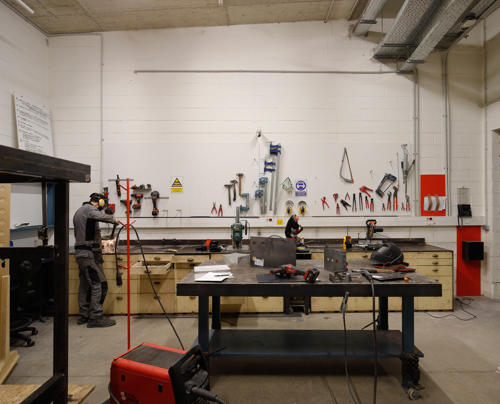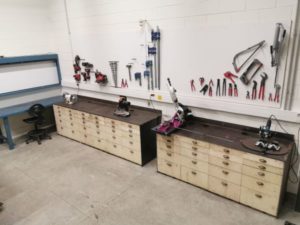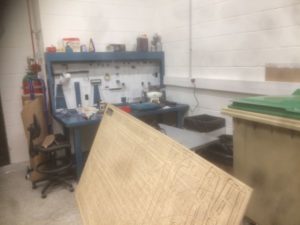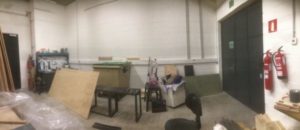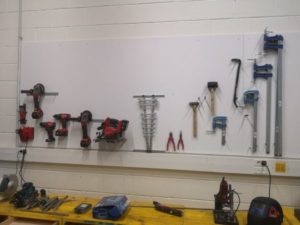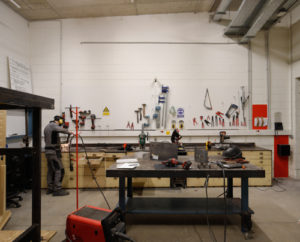l panel to place manual and electrical tools. The most used tools were placed vertically so that they were more visible.
Step by step
- Birch or poplar plywood boards: 5 panels of 1220x2220x12 mm
- Birch or poplar plywood boards: 5 panels of 1220x2220x 20 mm
- Two panels 1220x2220x30mm
- 20 three-layer formwork boards 500×2000 mm
- 50 drawer handles
- 200 long European screws 10 mm, 1000 screws 3×25, 3×30, 4x50mm
- 2 rolls of asphalt cloth 1000 x 15000 mm,
- 50 sets of telescopic guides with brake with a total extension of 500 mm
- welding electrodes 3.20 mm type E6013.
- Colorless treatment for wood PLASTOR T1 mono matt. 180-250-400 grit sandpaper for orbital sander.
- White glue.
- CNC Milling machine
- Drill
- Orbital roto sanding machine
- Airbrush
- Nail gun
- Compressor
- MMA welding machine
- Hammer
- Screwdriver
At the same time that the drawer unit was manufactured, it was decided to create a vertical panel to place manual and electrical tools. The most used tools were placed vertically so that they were more visible.
The vertical tool panel had to cover the entire length of the drawer unit and needed to have a useful height of 120 cm. It was decided to use 20 mm poplar plywood panels, which was hung on the concrete wall using plugs and posts.
The lightest tools were attached to the wall using screws covered in black flexible PVC tube with an outer diameter of 7 mm. Neodymium magnets were also used for the same matter. For the heaviest tools, 8 mm lag bolts were used. Their length varied according to needs. These screws were also covered with black flexible tubing, in this case a tube for compressed air of 15mm.

